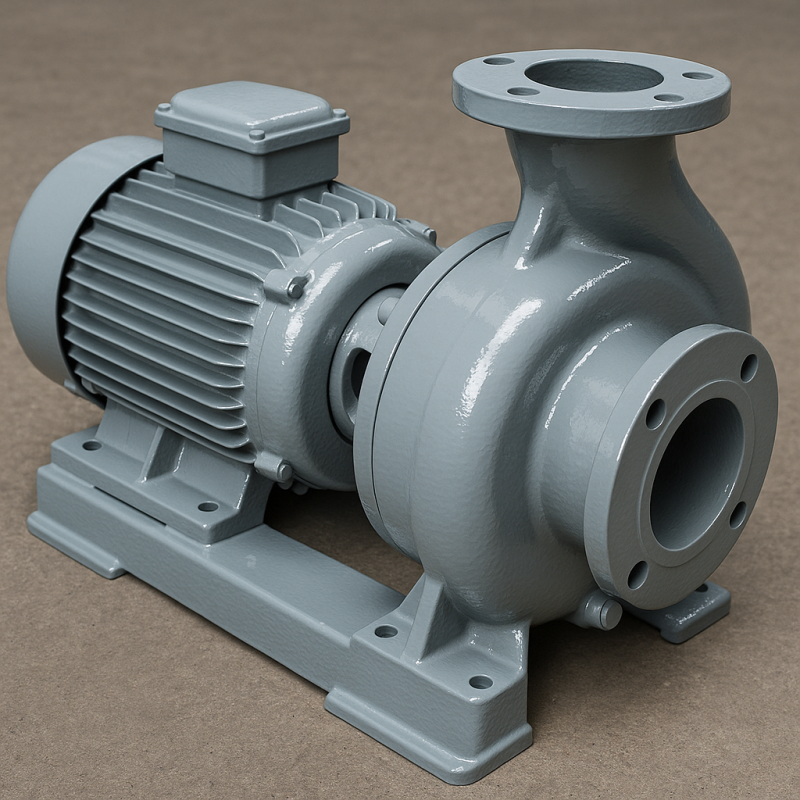Ceramic Resurfacing vs. Conventional Coatings: Differences in Pump Surface Protection
06 May 2025
Fluid Sealing compares ceramic resurfacing vs. conventional pump surface protection—discover the best solution for durability, efficiency, and value.
Ceramic resurfacing strengthens pump components against abrasive flow, chemical exposure, and thermal cycling. Industrial environments benefit from this approach by maintaining mechanical reliability over extended service life.
Ceramic Resurfacing vs. Conventional Coatings: Material Integrity
Ceramic resurfacing creates a robust, dense barrier that efficiently resists abrasion and chemical erosion, maintaining its stability even under intense operational stress. The molecular bond between the ceramic coating and the substrate ensures minimal displacement, preserving the coating’s integrity even under high hydraulic pressures or temperature fluctuations.
Standard coatings typically rely on polymer films or epoxy layers that can soften, crack, or break down due to repetitive thermal expansion and contraction. Over time, these coatings are prone to delamination, which exposes the underlying material to direct mechanical wear and chemical degradation, compromising their effectiveness.
Conventional coatings often exhibit early signs of material fatigue when subjected to irregular fluid pressures, high-velocity flows, or particulate contamination. Ceramic coating maintains its mechanical strength and protective capabilities across a wide range of fluid dynamics, ensuring consistent performance and durability in challenging conditions.
Application Methods in Ceramic Resurfacing
Application techniques for ceramic resurfacing require calculated precision and adherence to surface engineering standards. Each stage is executed to achieve a durable bond and ensure mechanical integrity across variable pump conditions.
• Surface Profiling Preparation: Grit blasting eliminates all residual contaminants and shapes the substrate for uniform adhesion. This process increases long-term coating retention and surface bonding.
• Tailored Ceramic Compound Formulation
Each resurfacing project uses a compound mix matched to thermal, chemical, or abrasive variables. Application-specific formulas provide targeted durability and protection.
• Controlled Application Thickness: Layer deposition follows a predefined thickness to prevent voids, sagging, or air entrapment. This uniformity supports structural performance under continuous pump activity.
• Thermal Expansion Validation: Coated areas undergo compatibility assessment for expansion and contraction during fluctuating operational temperatures. This ensures long-term dimensional stability.
• Curing Process Conditioning: The resurfaced unit is cured under defined humidity and temperature settings to reach its full mechanical capacity. Controlled curing protects against internal coating stress.
• Non-Invasive Damage Recovery: Localised wear or failure areas are resurfaced without requiring system-wide component replacement. This process limits downtime and improves maintenance efficiency.
• Predictable Service Life Extension: Outcomes of resurfacing provide measurable improvements in pump component longevity. Repeatable performance under real operational conditions reduces long-term cost exposure.
Resurfacing Precision That Maintains System Performance
Across mechanical applications, Fluid Sealing implements ceramic coating strategies to reinforce high-performance equipment. Each application is matched to system requirements using advanced material selection and engineered surface techniques.
Leverage our engineered ceramic coating methods to ensure long-term protection for critical pump surfaces under harsh operational demands
Related Blog: Ceramic Resurfacing Services: How Does Ceramic Coating Protect Pumps in Harsh Systems from Corrosion?
Explore this guide to discover insightful technical details about the topic: Coating Technology Increases Pump Performance
Optimized by: Netwizard SEO

